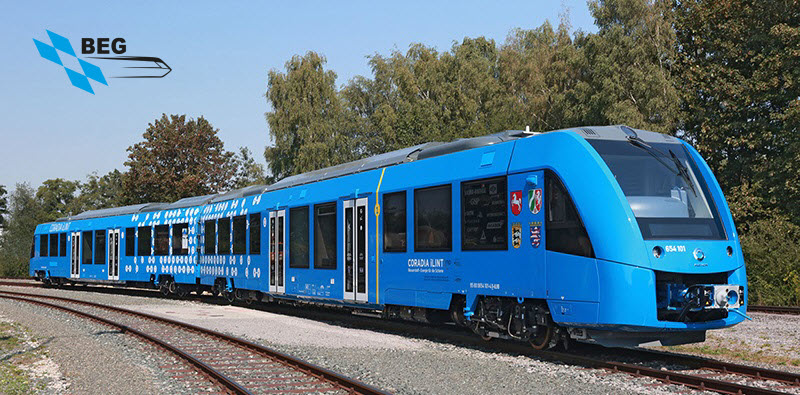
The vehicle is the only regional train without diesel drive for overhead lines that has been approved for passenger service in Germany.
The trip took place in close cooperation with the railway transport company Agilis, the Bavarian State Ministry of Housing, Construction and Transport and the Bavarian Railway Company (BEG), which plans, finances and controls regional and suburban rail traffic on behalf of the Free State.
Hans Reichhart said, “I am glad that we were able to bring the hydrogen train to Bavaria for a test drive under everyday conditions. The train is still a prototype, which still needs to be optimized to maturity, particularly in terms of driving dynamics, ran smoothly. We want to rely on more environmentally friendly drives on the Bavarian trains in rail passenger transport. In addition to electrification, we are pushing ahead with the introduction of hydrogen technology in the railway sector like no other country. For example, we are investing over € 25 million in state funds to support further research on this technology. It is all about the development of a prototype that can drive in hilly landscapes. ”
Hans Reichhart continued, “We want to rely on more environmentally friendly drives on the Bavarian trains in rail passenger transport. In addition to electrification, we are pushing ahead with the introduction of hydrogen technology in the railway sector like no other country. For example, we are investing over € 25 million in state funds to support further research on this technology. It is all about the development of a prototype that can drive in hilly landscapes. ”
Details of the vehicle
The fully emission-free Coradia iLint is based on the two-part Coradia Lint 54 diesel multiple unit in the wagon section. An electric powertrain with converters and traction motors acting on the existing final drives generates the drive torque. Instead of a catenary this electric drive is powered by accommodated on the roof of the two motor vehicle halves proton exchange membrane fuel cell systems, which are operated with hydrogen from the also located on the vehicle roof tanks. Two floors below the floor of the car are the battery systems. They buffer the excess electrical energy of the fuel cell, feed the traction motors and absorb energy recuperated during braking.
“We are pleased about the invitation to present our hydrogen train under real conditions with passengers on board in Upper Franconia. The Coradia iLint is Alstom’s zero-emission, climate-friendly alternative for the mobility of tomorrow. Thanks to its long range, it is above all slopes and long distances without overhead contact lines that are of great importance. ” Jörg Nikutta, Managing Director of Alstom in Germany and Austria.
Valuable experiences
During yesterday’s test drive, one of the two pre-production vehicles was used, which had covered its first kilometers in the Free State on the weekend before as part of the “Day of the Franks”. The aim of the manufacturer is to demonstrate the possibilities of using different conditions through extensive journeys in different federal states. The Coradia iLint is the first passenger-operated vehicle with alternative drive in Germany since September 2018 in the flat north-west of Lower Saxony in two units with passengers on board.
Bavaria also intends to switch its SPNV to non-diesel vehicles in the medium to long term. Hydrogen-powered trains are always an interesting option, as long as there is no electrification perspective and route networks prove to be predestined for this purpose. In a first step, according to the Bavarian Electromobility Strategy Rail (BESS), which has been approved by the state government, individual pilot projects with different drive types are to be started in order to provide sufficient and reliable experience. In hydrogen trains – regardless of the number of trains in the fleet operated – an additional infrastructure for refueling and hydrogen production is always necessary.
It is also easy to imagine that both the further development and the increasing competition in the manufacturing sector will lead to a significant reduction in the still high initial costs for the use of a SPNV fleet of fuel cell vehicles, which will soon make these trains more economical could be as conventional diesel vehicles.